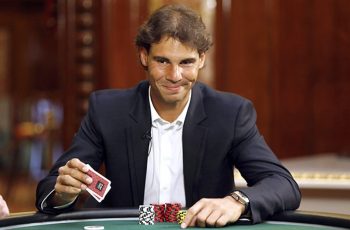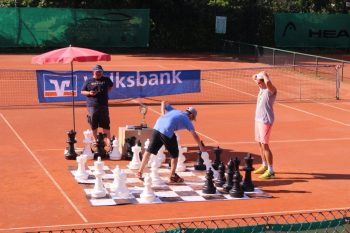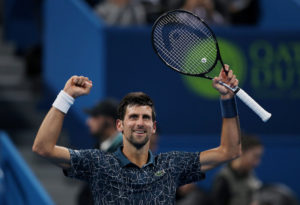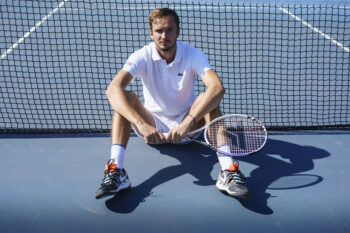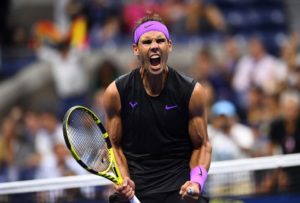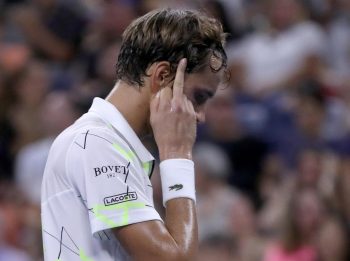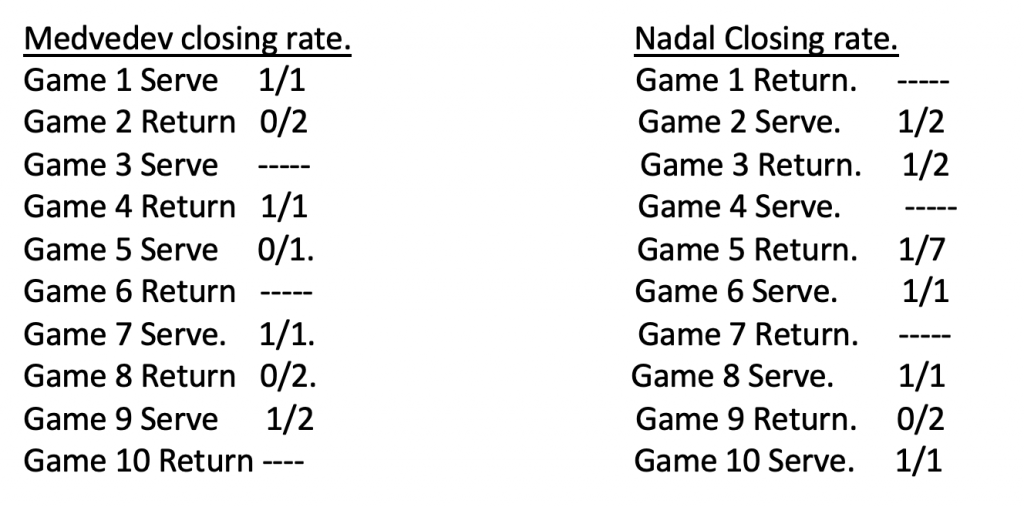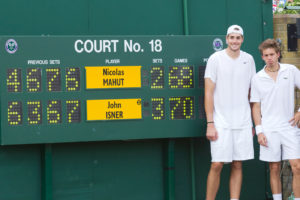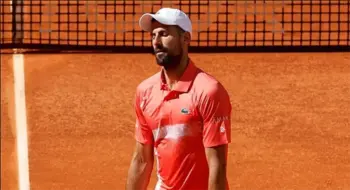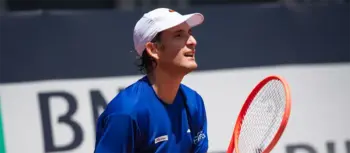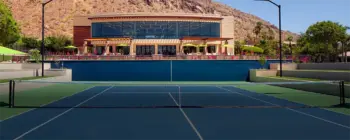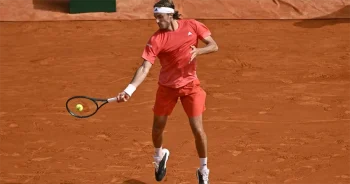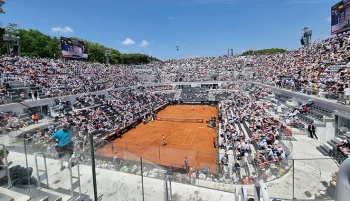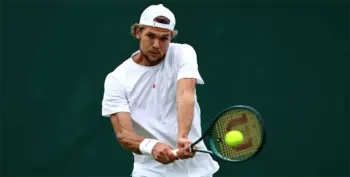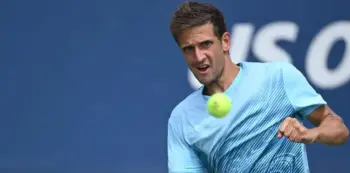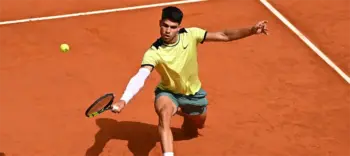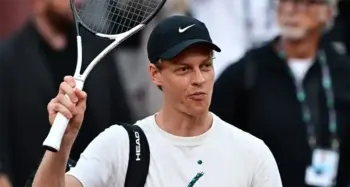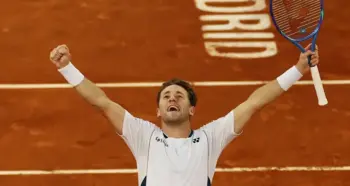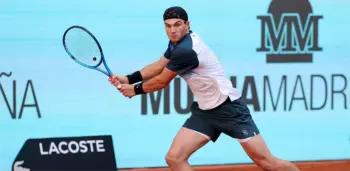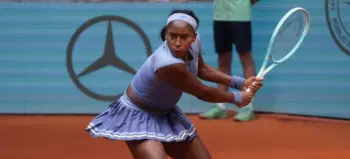Our guest contributor Evan Gaudreau is back. This time with a marathon Australian Open 2022 Men’s Final Analysis. Enjoy!
 Australian Open 2022 Men’s Final Analysis:
Australian Open 2022 Men’s Final Analysis:
Nadal d. Medvedev 2-6, 6-7, 6-4, 6-4, 7-5
Was this match won or lost by metrics? Stats? Winners to unforced errors ratio? Serve plus 1? Or maybe the length of the points 0-4, 5-9 or 10+? Or maybe it was none of the above. Maybe it had to do with something called strategy, and more specifically, mixing combos.
Reader! Make a choice. Do you take the RED pill or the BLUE one? Did you choose RED? What would you do if you were playing Nadal? Run and hide?
What would you do if you were Medvedev and playing Nadal, yourself and the Crowd? Especially when Nadal only has one thing to worry about – winning.
That’s already unfair, but when life gives you lemons, you make lemonade, but when you’re playing Nadal maybe spike his lemonade with some Grey Goose.
Then you might have a chance.
Let’s get into it
Listen.
Medvedev doesn’t want to go toe to toe with Nadal in a crosscourt rally on the AD side. Who does?Instead, Medvedev establishes a “spot” at the baseline. A perimeter he likes to use during the match, during the baseline rallies, to build his combos out of and neutralize Nadal’s forehand.
Where is this spot? The “spot” is located on the middle of the Deuce side, beyond the service line.
Medvedev uses this spot, because, other than owning the rally’s out of the AD side, Nadal also has another spot he likes to use to set up his forehand. It’s located between the “spot” I mentioned and the singles sideline on the Deuce side. Nadal uses this spot to rip crosscourt backhands out of, opening up his opponent on their Deuce side and setting up his forehand.
Nadal has used this so many times, it’s become second nature, like tying your shoes. Nadal can thank Federer for that! Take notice.
Nadal understands tennis strategy!
Nadal is far from one-dimensional. He watched the likes of Andre Agassi, the pioneer of the baseline patterns, watched him adapt later in his career to win eight majors.
Nadal didn’t want to win only eight majors.
If you followed his career, you would notice a transformation from a strong baseliner (Winning 13 French Opens), to a baseliner who could come to the net and finish points (and win Wimbledon), to a player with a marginal serve, to someone who can get cheap points with the serve (And win the US Open and the Australian Open). He’s transformed himself more than any other player on tour.
Did you know he can even serve and volley? Nadal didn’t win twenty-one majors for nothing. He controls the Ad corner rallies and has developed over the years a devasting two-handed backhand crosscourt shot to set up the “recycle” back to his forehand, to put the point away.
While I was watching the match, there was something bugging me. Something I was missing. It had nothing to do with the stats. I focused on those and tossed the notes after the first set.
As I watched the match, I started watching the mixing of combos.
Not by Nadal. Nope! By Medvedev!
A chess match on a tennis court
Picture this:
Think of mixed combos like a piano, except the keys aren’t as small. Let’s say the piano (the baseline) has four keys, even six, and even eight if you can control the ball well enough. You use those keys at the baseline to make your own music, your own notes as you’re playing the match. And one of those keys you may “tap” more than the others, but to change it up you “tap” another spot more than the others and so on. But for some reason you decide to use one of the middle keys more than the outside ones.
You still with me?
That is what the top guys are doing to their opponents. Using the baseline as a keyboard and making their opponent dance all over the baseline. They don’t JUST hit the ball crosscourt. When they train, they don’t roll out to the courts and hit fifty crosscourt shots and fifty down the lines, maybe hit a few volleys and serves and play sets.
The top guys are playing chess. Specifically, Djokovic (Grandmaster), Nadal (Master) and the Apprentice (Medvedev).
Djokovic’s baseline patterns are ridiculous. They had to be; to beat Federer and Nadal. And Oh! He wants to be the GOAT too. He wants to be the GOAT more than anything in the world and he will not be stopped. He has an axe to grind and he wants to prove to the tennis world that you don’t have to be as amazing and gifted as Federer to be great. You can be a tactician also and be Great.
Simple and complex combos
A tactical strategy while serving is the body serve. It’s the same concept as mixing baseline combos. You can “Tap” the center of the box with your serve placement and then you can put your first ball either way depending on what you want to establish and what you want to “mix.”
Simple combo.
Medvedev establishes “The Spot” during the first set. He knows he can’t do that the whole match, but he can establish the “spot” and then deviate from it, as needed, as the match goes on.
Think about it:
You can hit the spot for three shots, shoot one to the other side of the court and then go back to the spot for one or two and switch the direction again.
No? How else are you going to make your simple combos work? You need the simple combos to mix with the complex combos.
Think of this! Think of mix combos like the scientist on South Park. “It’s like a taco, within a taco, within a Taco Bell, within a KFC, within a mall, THAT’S INSIDE YOUR BRAIN!” (Check out the South Park episode Insheeptsion and try not to laugh.)
Coach is king
Hello? We’re back.
Watch the players outside the top 5 and the combos get simpler. Watch the players outside the top 10 and you start to see a few mix combos but no development. Why? It comes back to the coaches.
How many Cerebral coaches are on the market? Not many. But you can find a technical coach everywhere in the world. You don’t have to go far. You might be able to find one on the back of a Wheaties box.
Call 1-800-CHEEZER.
If you don’t establish a pattern, you cannot mix combos. It doesn’t work like that. And if you think tennis is instinctual, maybe you should start wearing underwear on your head. Don’t do that. That’s weird.
There’s something else that’s bugging me too. It’s driving me crazy. Seriously though. I think I’m missing something else. There’s more to tennis than stats.
Set 1, Game 3
In the first set, you can tie a lot into game 3.
I do more extensive review on Game 3 on my Facebook page. I’m trying to keep this piece short.
By the end of the first set, Medvedev won eight of the last nine points. Nothing too crazy about that stat other than Nadal was probing. Trying to find something to change in order to get himself back into the match.
Medvedev continued to hit the “spot,” while also mixing quick strikes to the forehand side. Nadal, on the other hand, had been trying to use slice backhands to change the pace in his tactics (Barty slice tactics).
One thing that is becoming important is Winners.
For instance, you can grind, during the points, for three or four games, and during those games on each game point you hit a winner to close the game by doing something other than grinding, like attacking early in the point and ripping a winner. Your opponents’ not going focused on the grinding. He’s going to be thinking about the winners. Especially if you’re competitive and have the anger in you already. You’re going to be thinking about the winner Down the Line, like Medvedev has been setting up.
Try it the next time you play.
During some matches I’ll “establish” the T on the deuce side and then close the service games out with slice out wides. My opponent is clueless to the building of the T serves. He’s focused on wide serve. Same as the baseline patterns.
Not exactly rocket science. But man, it works. (Shapovalov uses service patterns well. Check them out.)
Medvedev’s pace of play
Another thought popped into my head.
Why does Medvedev play so fast? Maybe, so his opponent can’t get their mind set before the point. This is smart. Especially against Nadal who utilizes the clock to his advantage and gives him the time to process what his opponent is doing.
(The thing that cracks me up about junior coaches, to college coaches, to even coaches on tour is the notion to tell their players to use that time to calm down, relax, breath, walk back to the fence etc. I’d rather be thinking about the point I played, the adjustments that need to be made, if there are any, and the point I’m about to play. I don’t have time for emotions. I’m not a baby).
The point is, Nadal is a genius and remembers the patterns. He actually spends time working on his memory and the recovery of points in his head in a twenty-five second period. Like playing speed chess.
Second set
Second Set. Both players continue their game plans. Although, Nadal’s energy is rising and his game is heating up. And he’s recognizing the “spot” area and countering with some forehand inside outs.
When Medvedev got broken, I thought maybe he slightly went to the well too much. Almost like a security blanket. Can you blame him? I’m not sure if that was the case or Nadal was just adjusting. Maybe a little of both.
But there are more seeds being planted. The crowd is starting to get more into the match. By Nadal’s fist pumps.
Funny note: Medvedev went for a winner up the line, barely missed it long and Nadal stepped on the mark, squashing it. It was the first point after the break of serve.
The Mcintosh brothers are alluding to the fact that some changing of patterns need to be made. I know it’s McEnroe. Nadal finishes that game with a Serve and Volley winner. That’s it. That’s what I’ve been missing.
How players finish games, and even how they start games. Again, once a player establishes a game plan for a certain period during the match. Let’s say for their first two or three service games they win with an open pattern, like serve out wide at 40-15 and hit the ball to the open court, and they start to notice the player “inching” over, they can “backdoor” their next game point on deuce and go back to the deuce side with the first ball.
Watch this! The opponent will have hips turned, off to the races to the open court, while your shot will be heading in the opposite direction. Boooom!
These are easy manipulation patterns, but not for emotional players who are worried about their technique and their swing or players focused on trying to relax, because all their coaches have told them that’s what you do after the points over.
Medvedev is getting triggered
Medvedev is starting to get upset, though. He’s starting to get triggered. Triggers and compounding are a topic I am also writing about but chose to leave out. (There’s too much information. That’s the mental side and needs to be separate.)
At this point, I checked on points won and lost but started to feel that it was somewhat irrelevant and only used that stat to help follow the score.
Mid set, Medvedev is changing how he wins game points. And Nadal is using drop shots on big “swing” points, even game points. To go up 5-3 Planting seeds! This next game is huge!
14 points total. At 15-40 Nadal serves and volleys on first break point and wins that point and on the second break point he uses the ripper forehand inside out and follows it to the net, from a second serve. Sneaky.
Medvedev ends up breaking serve to get back on serve in the set. But my mind started going somewhere I wasn’t expecting. A fan jumped on the court and it made me think, what if I had millions of dollars, was Nadal’s agent, wanted Nadal to win this final, knowing his on the tail end of his career and Djokovic still has a few more years of winning majors, knowing they’re tied at the moment.
Hmm. What would I do to sway my guy? I’d put a guy in the stands, unbeknownst to my player, and maybe heckle Medvedev after double faults. Or maybe get the crowd going? No wait! Nadal took care of that part. All the fist pumps, perfectly timed, to get the crowd going, and the beauty of it was telling them to calm down.
Nah! You’re right. That’s some crazy thoughts. I apologize.
Make no mistake about it. Nadal wants this major, badly! He doesn’t want Djokovic running away with the Slam total. What would Bill Belichick do?
It’s tight!
Medvedev finished the next service game with a serve and volley. Caught Nadal by surprise. So much that he didn’t even run after it. The next game they trade points for the first eight, until Nadal wins the last two. Interesting game, but Nadal still utilizing the drop shot. The crowd erupted after he won the game, on a missed return.
5-6. Medvedev opens the game with change, going to the Nadal forehand right away, winner. Second point he goes back to the “spot,” but loses the point. Third point he finished him with a backhand down the line, again setting up the point to the forehand side. 4th point another dropper from Nadal. Medvedev finished the game with an ace and an aggressive forehand to Nadal’s forehand.
Change! Changing the way he wins the game.
**Side note* Be careful of the stats on the TV. They’re Misleading!
Crowd tried getting involved during the tiebreaker, but Medvedev finished the set off. When it comes to length of points, you have to pay attention to when they occur during the game or set and why.
Nice generality there.
3rd set
Crazy first game. I’m still paying attention to how they start the games.
Medvedev hits a few winners to the forehand side. He still goes to his spot also. He’s also starting to express more anger towards the end of the game. He uses what I call a revenge combo. Nadal’s been drop shotting enough times (seeds) and getting away with it, it’s getting underneath his skin. He tries to get him back with one of his own at game point. He fails, but gets out of the game with two aces.
The first few games go by with “normal patterns” continuing.
During the next game I got another weird thought after the 2nd point. Nadal won a point that he should have lost. He fist pumps. And the TV coverage goes over to his box. It shows Carlos Costa. His face looked ruthless. Something about the look in his face makes the hairs on my neck rise. I had to look him up on wikipedia. What’s that guy up to?
I pictured him pointing a finger and saying in a Spanish accent, “You are not fit to live. You must die.” He flicks his finger and I go “Pooof!” Man! If I could talk to Paul Ekman and have him confirm my suspicions.
*Misleading stat popped up on screen. Nadal’s avg rally length. It said previous to the final it was 3-4 shots. During the final it said it was 7 shots. There are so many short points, this stat is not relevant. It’s like getting 90s in class on your tests and one 50 and it kills your average in class.
I debunked every stat that popped up, which is troublesome, because how many people watching are going to focus on the stats and think they had merit.
The other thing I’ve been missing is starting to break through in my head. I’m going to save it till after the sets over.
The tide is turning
The crowd noise is rising. It’s getting annoying. They’re just yelling to yell. They have no idea what’s going on.
Medvedev’s feeling it for sure. He wins a lucky point and fist pumps. Yikes. Probably not the right move. I wish he would do that after those backhands down the line.
This seems silly, but I feel like, how you fist pump matters, a little. Hitting great shots on big points, I get it. Positive. Doing it on lucky points, I feel like that could be a negative. It’s literally something that players either have to practice or “rework” how they do it. And you can see that in set four when the crowd cheers on an easy miss by Medvedev and he raises his racket and salutes them. Antagonizing them. Those are one of those things we carry with us through the juniors to the pros or whatever level you play. It’s like we do it without thinking because it’s been “seared” into our brain.
At 3-2 Medvedev, 0-40, Nadal drop shots and gets a freebee (Seed). On the next point, Medvedev gets a little aggressive with his backhand crosscourt and zips it past the baseline.
30-40 And on this point, he attempts a drop shot, and Nadal runs it down and hits it crosscourt, at Medvedev’s feet. Medvedev, stuck in no-man’s land, rolls the ball into the net.
Sometimes our best weapon can be our worst enemy. For Medvedev, it’s his mind. This guy’s super smart. You can tell by the way he sets up his points. Pay attention to his matches. Start watching his combos and mix combos. And you go try.
How to be more like a chess player on the tennis court
Question: How do you train combos, especially mixed combos and then make those combos a part of your mind so you don’t have to think about them during the match?
Answer: I’m not telling you. Not even if you waterboard me.
Little secret. Who you are off the court is who you are on the court. And vice versa. Know thyself. For starters read, The Book of Five Rings, by Miyamoto Musashi.
I got it now. The thing I was missing was conversion rate. Not conversion rate on break points. Just plain old conversion rate on closing games.
So, say you’re up 40-0. You win the point. (+1). And if you lose the point. (-1). How quickly you close games matters. I went through what I consider the “real” conversion rate and the match started unfolding for me. It was like I found a key to a treasure box. Everything started making sense.
A small diversion…
Have you ever played a match and it took forever to close a game, or two, or three? It sucks. It’s mentally exhausting. Especially when you miss easy shots at 0-40 and you find yourself in a deuce game. And you lose the game. Even if you win the game, you’re upset.
My last competitive match I played, I played against a 10 UTR female player from U of Virginia. At the time I was 45, no training, can’t tell you the last time I played sets and I win the first set two breaks 6-2. Second set rolls around and I forgot how to close a match. 0 break points until 5-5. It was like I disappeared. Then got my first break point. Converted and held. Phew!
I hate to admit this, but I probably would have smashed my frame if I lost the second set. Old habits die hard even though this match means nothing to me. Plus, I might have a little anger inside my old body, built from childhood trauma, after my brother died. When I get triggered…oh boy, watch out. Anger mixed with rage is not a pretty sight.
Do you understand anger? Do you? I apologize here, because I’m going to take you on a little journey. A diversion. During the match I played….Stay with me! It mirrors the Medvedev match.
As I was in the second set, A train passed by the back of the court. I’m playing a match and my brain starts thinking about the train. Why did the train pass by? And where are those people going? If the train is going left, that means it’s going toward Rhode Island. A few more points go by and I remember riding a train in France from Switzerland. Or was it coming from Switzerland to France? Who cares? I’m playing match.
Oh Yeah.
I start playing more points but I keep losing the early points in the game. I’m not frustrated yet, but it’s starting to bug me. Then, I smell something. It’s fish. Man, that stinks. I’m playing a match here people. Apparently, it’s dinner time and the people just want to distract me.
How rude! Stop distracting me. My service games are going fairly routine. But my return games, I find myself down 0-30 every game. What’s going on? Why is this happening. You need to change…Then I wonder why my kids never tried fish. I used to eat fish every Friday during lent.
Crap! Games over. How’d I lose that game?
Hey! Buddy! We have a match to play. Let’s focus here. Another routine hold.
I’m focused on my service patterns. Now I start thinking about what I should do to stop losing the early points on the return games and then there’s a guy watching the match. He just showed up and walked over. I put my towel in the back of the court and I’m wondering who the guy is. Do I know him? Where have I seen that guy before.
It’s 0-30, again. Then, during the next return game I missed an easy volley on the first point. 0-15. WTF.
I’m getting pissed. I dump the next return. Then I miss another easy shot. I want to fire the ball out of the court, over the train tracks and just demolish the ball. But I can’t. I don’t want this player to see me pop.
I try to focus on the changeover.
It’s 4-5 and I don’t want to go to a third set tiebreak. When she’s not looking, I tap my calf with my racket. Taps the nice way of putting it. When I get home, and my wife sees my calf, she’s going to say something for sure. “Did you hit yourself again?”
Oops. The tap wakes me up. Brings me back to the match. Oh! BTW. Watch in the fourth set after Medvedev misses two backhands in a row down the line on back-to-back points. He “taps” his thighs with his racket. Refocusing.
I finished my match. 7-5.
Doesn’t everyone have these thoughts during a match? About trains, food, people, what are your kids up to? Who is this guy watching the match and did he see me dump an easy volley?
On my good days, my brain is just being normal, one or two thoughts, but when it gets triggered, my brain has different levels of thoughts and goes all over the place.
Now! I’m not saying Medvedev has wild thoughts during matches. But I’m wondering! I’m trying to help you understand what’s is going on inside the head of an active brain.
Back to the match.
Now think of being in a major final and your conversion rate is low. You know it’s low, but you don’t know how low, but the feeling lingers, then you miss more easy game point put-aways. The errors compound, without a release to blow off some steam, then you get triggered by the crowd because they don’t know when to cheer. Apparently, the fans thought they were coming for soccer and walked into a tennis tournament.
The crowd gets into it again and Medvedev slips a little and the sets gone.
4th set.
This piece is getting winded. I’m going to try to wind it down now and keep the focus on the Conversion of closing games.
Standing alone, these are just stats on a piece of paper. But if you put them in order of when they happened, you can see a pattern. If taken in context with the whole match and other factors, they mean much more. Good coaches see and use all the metrics.
When two chess players go against each other, you’re going to get a wild analysis. If either player was playing most other players on tour, I probably could have written this in less than half the pages I used (and let me tell you, I left out chunk more of info).
Game 5 might stand out to you on paper. It can mean many things. It can mean Medvedev had one chance to convert the game, but failed to do so. It can also mean Nadal had seven chances and was able to convert once. There’s more to it than that. Which player was more affected by the game? Next week, that metric can mean something totally different.
For instance, if I use this metric for my 13-year-old daughter, this metric is useless. A 5,6, or 7 UTR should be focused on getting in shape and working on simple open court aggressive patterns. Not mixed combos or how you close games.
You can’t fool a fool.
When you get up to UTR 8 or 9, you can start focusing more on finishing at the net and actually use it against lower rated players and under down points like 30-40 with success.
When you get to 10, you can circle the wagons back to the baseline patterns and develop mixed combos. In the meantime, you can also add the serve plus 1 combos. And so on.
Hitting a wall
90% of players, hypothetically of course, work on one thing and they do it really well and can transcend levels, without having worked on the things I previously mentioned. And then they hit the wall. They search and search and search and can’t find the answer. How can a 26-year-old ex-college D1 player move to the next level? They’re stuck between 12.5 and 13.5 UTR. Man, how time flies. Still out there grinding, but I ask the question what part of your game did you neglect? Each player has a metric that matters. For John Isner, these metrics may mean nothing. What means more to John is how he does in the 0-4 ball rallies!
Maybe. Maybe not. Maybe John Isner’s coach says, “Hey, your serve is great, one of the best. But we really need to work on being the best at the baseline.” Does he? Maybe John hires Milos from the show Seinfeld to be his coach? Around every corner, there’s a Milos.
One technical flaw pops up during the match. The volley. Specifically, the forehand volley. Does anyone work on volleys anymore? I’ve narrowed down how to look at the volley, Pre-Polyester and after. The volley has changed slightly and the teachers are still teaching pre-poly technique.
I’ll write a separate piece on that. Some teachers are evolving in their baseline game teaching philosophy because of poly strings and spin etc., but they didn’t think the volley techniques had to change. I’m guilty too.
5th set.
During the fifth set, two games pop up. Game 6 and Game 11. Look at them. That’s your homework.
Unfortunately, I’ve taking up a lot of your time and my wife’s and my kids. I’m going to have to shut this down.
I’m going to leave you with one thought. The best of five set matches, favor the Cerebral players, especially the champions. This is why you see Nadal, Djokovic and Federer dominating the slams of late. Well, Medvedev is also making ground. Oh! And guess what? His coach is super smart too.
And guess who’s also on the rise. Beware of Felix Auger-Aliassime. Who’s his coach?
Cerebral coaches are hard to find. These days, it seems as though 95% of coaches are technical and I’ve watched way too many talented players lose to Counter Punching grinders who have a ceiling of 13 UTR and are there to be food for the young Lions.
Go back to your hitting sessions and work on mixed combos, no matter what I said. And pay more attention to how you finish games. If you don’t need to change the way you win, you’re not challenging yourself.
Enjoy
-EG
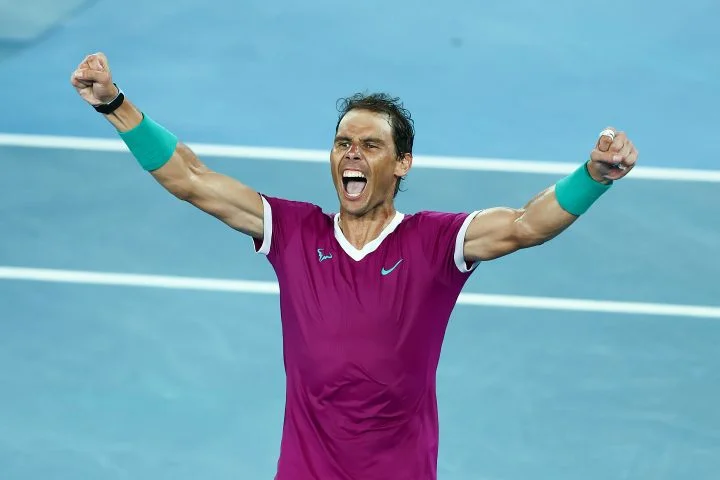
 Australian Open 2022 Men’s Final Analysis:
Australian Open 2022 Men’s Final Analysis: